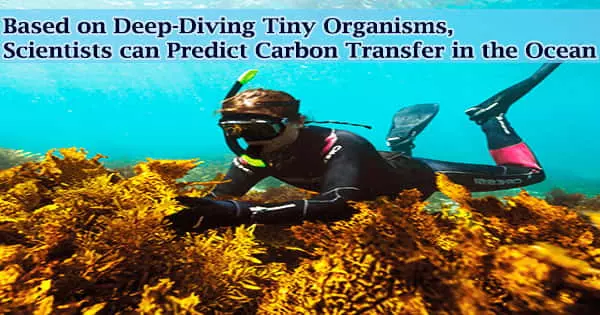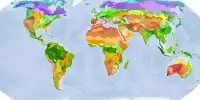The bacteria that latch onto particles at the ocean’s surface, dubbed hitchhikers, have a large role. They float along until they reach the ocean’s deepest depths, transmitting carbon to the ocean’s deepest waters. Although measuring the rate has been difficult until recently, the travel can take weeks to months.
The size and kind of bacteria that latch onto the particles affect the speed of carbon transfer, according to a team of international experts lead by USC. Researchers have been able to construct a computer model for calculating carbon transfer, which is a part of the Earth’s natural carbon cycle that helps to maintain its climate, in oceans all around the world, thanks to the discovery.
According to Naomi Levine, an assistant professor of biological sciences, quantitative and computational biology, and Earth sciences at USC Dornsife College of Letters, Arts, and Sciences, the discovery sheds more light on how carbon, including pollution from cars, moves from the atmosphere into the ocean and eventually makes its way into the deep ocean.
According to Levine, knowing the carbon transfer rate could help scientists better grasp how well the Earth retains carbon in its deepest waters and whether much of the carbon that would normally sink is returning to the atmosphere.
“This is the first time that we’ve been able to build a model to predict ocean-scale carbon-cycle dynamics that accounts for these micro-scale processes that have been observed in the lab,” Levine said. “We show that the processes matter a lot.”
There is a lot of mortality or death with these bacteria. That impacts the rate at which they can break these particles down. By breaking down the particles, they also release nitrogen and phosphorus back into the ecosystem, which is a critical part of the cycling of these elements.
Trang Nguyen
Microbes play a large part in carbon transfer, thus scientists are interested in learning more about their colonies and how long they can survive. Without them, “carbon falls deeper into the ocean. This impacts how much CO2 stays in the atmosphere,” Levine said.
Some like it hot
According to some estimations, the ocean stores up to 16 times the amount of carbon contained in the biosphere. One type of carbon that ends up in the oceans is carbon dioxide. While it raises ocean surface temperatures, it is necessary for some forms of life, such as phytoplankton, or sea plants.
However, as CO2 levels rise, the water becomes more acidic, endangering the existence of some sea species like as corals and kelps, which are the primary food source for marine life.
The researchers discovered that the pace of carbon sinking in the ocean, as well as the depth at which it occurs, is influenced by how far down the bacteria travel on their life’s journey. For other bacteria, the journey is quite brief, and they never make it to the deep ocean, which is more than 1,000 meters below the surface, unlike those half-eaten particles.
Healthy bacteria colonies increase the likelihood that carbon produced by hungry hitchhikers munching on particles remains in the surface ocean and returns to the atmosphere.
“There is a lot of mortality or death with these bacteria. That impacts the rate at which they can break these particles down,” said Trang Nguyen, a study co-author who is a USC Dornsife post-doctoral research associate.
“By breaking down the particles, they also release nitrogen and phosphorus back into the ecosystem, which is a critical part of the cycling of these elements.”
Knowing which bacteria live in certain ocean places could also aid scientists in fine-tuning the model to better forecast a local rate of carbon transfer or release, depending on whether or not the bacteria are thriving.
Levine worked with scientists from the Massachusetts Institute of Technology, UC San Diego, and the Swiss ETH Zurich. The Simons Foundation provided funding for this project.
















